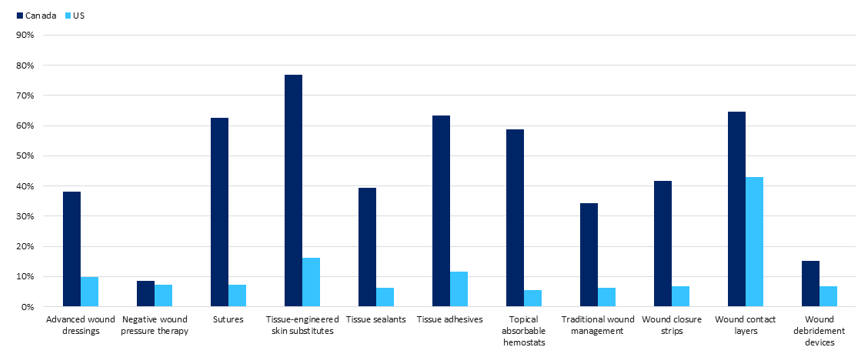The economic and social impact of preventable injuries in Canada is rising, with trauma and burn injuries increasing by 2% annually since 2018, according to GlobalData, a leading data and analytics company.
It is expected that there will be nearly 4.8 million trauma and 58,000 burn injuries in 2024.
These injuries not only strain medical system resources but also have a significant emotional and physical toll on individuals and communities.
Preventable injuries make up a substantial portion of the country’s wound care expenditure.
However, if the incidence of preventable injuries decreases, the funds could be strategically reallocated to strengthen other critical healthcare services.
According to Parachute, preventable injuries cost the Canadian economy an estimated $29.4bn in direct healthcare costs in 2018, with falls alone accounting for $10.3bn.

US Tariffs are shifting - will you react or anticipate?
Don’t let policy changes catch you off guard. Stay proactive with real-time data and expert analysis.
By GlobalDataAdditional indirect costs include lost wages, higher insurance premiums, and an increased burden on social services.
By reallocating even a fraction of this annual spending, other healthcare services such as mental health and chronic disease management could be significantly improved.
For example, increased funding for mental health services could address the rising rates of suicide and self-harm, which are among the leading causes of injury-related deaths in Canada.
GlobalData’s research highlights that trauma and burn injuries make up 40% of the total treated cases in key wound care medical device markets in Canada, compared to 23% globally and only 7% in the US.
This disparity indicates a significant potential for reallocating funds to other critical areas of patient care.
Investing in prevention can help reduce these staggering costs. Effective awareness campaigns can lead to behavioural changes that significantly decrease the incidence of such injuries, thus alleviating some strain on the healthcare system.
By prioritising preventive measures, Canada can reduce this economic burden and improve overall societal health.
To effectively reduce the occurrence of preventable injuries, a multifaceted approach involving public education, regulatory modifications, and community-based interventions is essential.
Addressing the root causes through behavioural and environmental changes is crucial for any substantial reduction.
Community programmes and national initiatives such as Parachute’s National Injury Prevention Day on 5 July play a pivotal role in raising awareness and advocating for injury prevention.
Other targeted efforts, including fall prevention among older people, road safety campaigns, and measures to reduce opioid-related poisonings, are vital components of a comprehensive injury prevention strategy.
Addressing the high rates of preventable injuries through targeted prevention efforts and reallocating resources can transform patient care in Canada, leading to a more efficient and effective healthcare system.
By implementing comprehensive educational campaigns and reinforcing safety regulations, Canada can mitigate the human and economic toll of preventable injuries, ultimately enhancing public health.
These changes promise not only to save lives but also to create a superior healthcare system.






